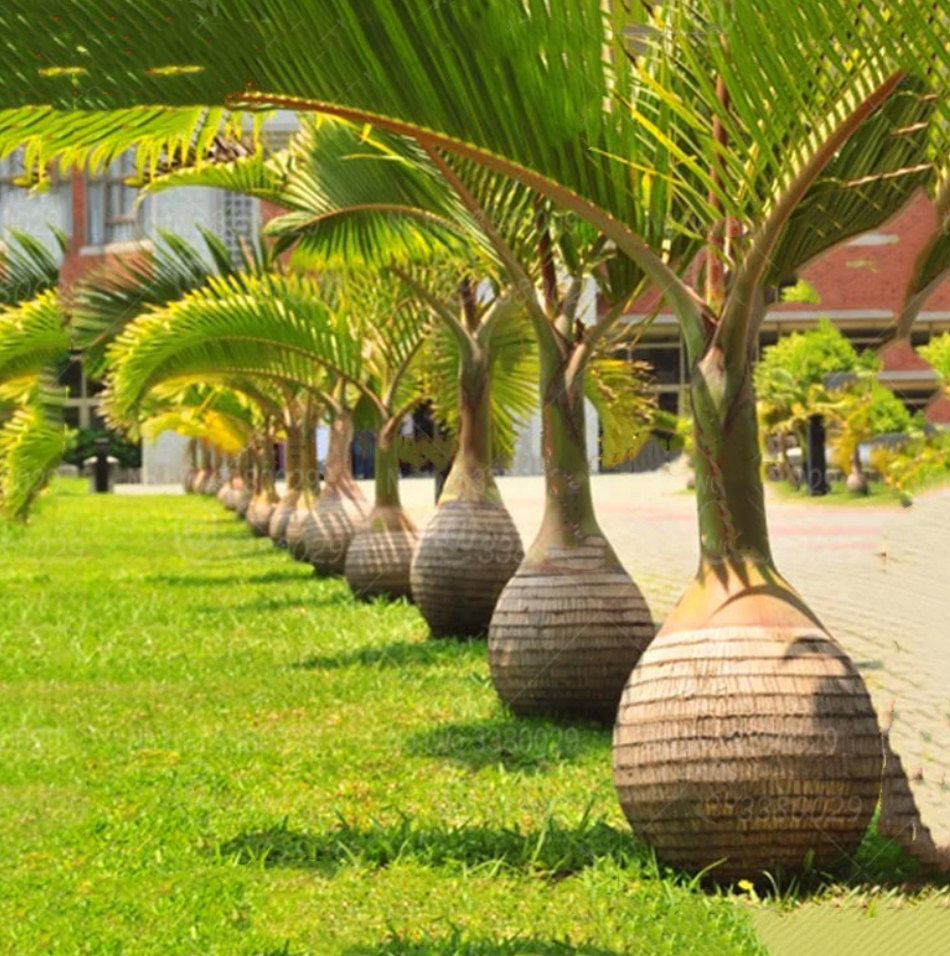Aptly named for its uniquely shaped trunk, the bottle palm (Hyophorbe lagenicaulis) is relatively small but beautiful accent palm for any tropical garden. Typically ranging in height from 5 to 7 feet overall (10 foot maximum height), this palm adds a striking statement to your landscape with its graceful fronds, swollen trunk, and reddish colored crown shaft and leaf stems. The bottle palm also makes for a great container palm due to its slow growth habit.
Often seen in a single trunk, bottle palms are also available in eye-catching, multi-trunk specimens. Contrary to popular belief, the swollen trunk of this mini palm is not for water storage and although it can be moderately drought tolerant after it gets established, irrigation is required for optimal results. At the same time, this palm does not like an overly wet area and prefers to be planted in soil where the soil drains well, like our island environment. Generally speaking, freezing temperatures or frost for a few hours will not usually kill a bottle palm, but may burn the tips of the fronds.
Naturally found on Round Island off the northern coast of Mauritius in the Indian Ocean, the bottle palm is highly salt tolerant, making them ideal for coastal plantings. While habitat destruction may destroy the last remaining palms in the wild, the survival of the species is assured due to its planting as a specimen plant throughout the tropics and subtropics. In the United States, only southern Florida and Hawaii provide ideal locations to grow this unique palm tree. Luckily for us here on Sanibel Island, we are fortunate enough to fall in the perfect environment to enjoy the beautiful bottle palm!
This column is a joint effort by all at In The Garden, a Sanibel garden center, located at 3889 Sanibel Captiva Road, Sanibel, Florida.
